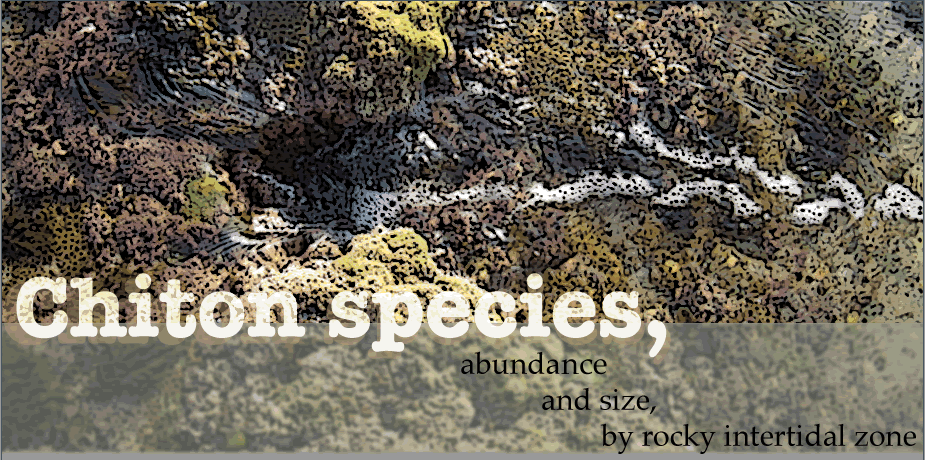 |
||||||||
 |
||||||||
|
Materials: Measuring tape Small ruler Paper Pen/pencil Flashlights Camera for photos Four group members Methods: Location: Gulf of California: Puerto Penasco, Mexico, Station Beach This study was conducted on the rocky intertidal zones 3 and 4 at Station Beach in Puerto Penasco, Mexico. Initially, the study intended to find different chiton species that resided on two different types of rocks: the coquina and the basalt. In order to obtain good data and results, it was necessary to be in a "chiton" rich environment. In order for this to happen test runs were conducted. During a test run zones of interest were entered in which a rock was lifted without recording information for that rock. If chiton were present underneath the rock, then information was recorded and surrounding coquina and basalt rocks were lifted. The procedure of the experiment was as follows. The experiment was started at 7:23pm, during low spring tide. Data was collected only during low tide, once at 7:23pm-9:20 pm and again at 7:55am-8:57 am. Rocks sampled followed the following criteria: rocks were not buried in sand, rocks were not completely submerged in water, they were at least half way exposed, basalt and coquina rocks of any size (that could reasonably be lifted) were sampled. Then, chiton rich environments were found by randomly selecting basalt and chiton rocks to flip over. If no chitons were found researchers moved to a new area. If the area was chiton rich, a 50m x 50m area was estimated around the environment. Once researchers entered a chiton rich environment the following was measured: a. Number of chiton present on the rock b. Size of the chiton (measured in centimeters by the small ruler) c. Measure dimensions of the rock (length and width in centimeters) with measuring tape. d. Type of rock reported (basalt or coquina). e. Zone the rock was in (Zone 1-4, where Zone 4 is closest to the water). f. Pictures of each rock containing chiton were taken to document species. For consistency in the experiment one person lifted rock, one person measureed the size of chiton, one measureed the size of rock and one person recorded information. An adequate number of rocks was ~8 rocks with chiton per zone. This process was repeated through low, middle, and high zone 3, and high zone 4. Works Cited   |
||||||||